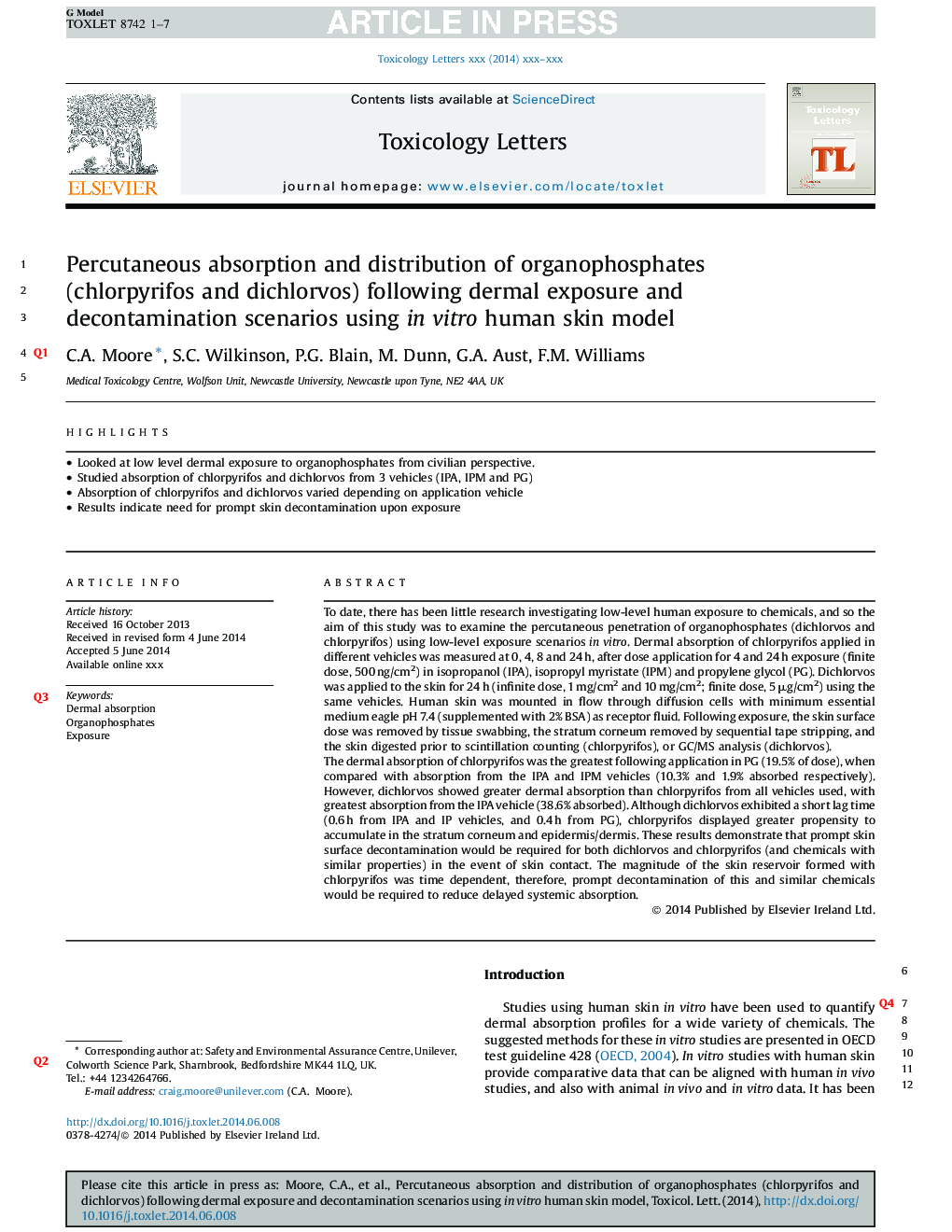| Article ID | Journal | Published Year | Pages | File Type |
|---|---|---|---|---|
| 5860238 | Toxicology Letters | 2014 | 7 Pages |
Abstract
The dermal absorption of chlorpyrifos was the greatest following application in PG (19.5% of dose), when compared with absorption from the IPA and IPM vehicles (10.3% and 1.9% absorbed respectively). However, dichlorvos showed greater dermal absorption than chlorpyrifos from all vehicles used, with greatest absorption from the IPA vehicle (38.6% absorbed). Although dichlorvos exhibited a short lag time (0.6Â h from IPA and IP vehicles, and 0.4Â h from PG), chlorpyrifos displayed greater propensity to accumulate in the stratum corneum and epidermis/dermis. These results demonstrate that prompt skin surface decontamination would be required for both dichlorvos and chlorpyrifos (and chemicals with similar properties) in the event of skin contact. The magnitude of the skin reservoir formed with chlorpyrifos was time dependent, therefore, prompt decontamination of this and similar chemicals would be required to reduce delayed systemic absorption.
Related Topics
Life Sciences
Environmental Science
Health, Toxicology and Mutagenesis
Authors
C.A. Moore, S.C. Wilkinson, P.G. Blain, M. Dunn, G.A. Aust, F.M. Williams,
